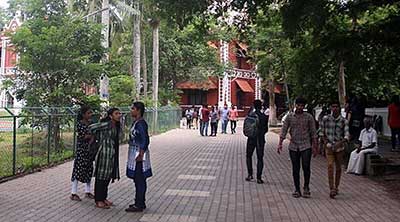Date: 23/01/2023
Relevance: GS-2: Welfare Schemes for Vulnerable Sections of the population by the Centre and States and the Performance of these Schemes; Mechanisms, Laws, Institutions, and Bodies constituted for the Protection and Betterment of these Vulnerable Sections.
Key Phrases: Menstrual Benefits Bill 2017, Maternity Benefit (Amendment)Act 2017, Interference with Cultural Norms, Medicalisation of Menstruation, Reinforcement of Myths
Why in News?
- The Kerala government has recently announced that it will grant menstrual leave to female students at state universities under the Department of Higher Education.
- The policy has been extended to state universities after the Cochin Institute of Sciences and Technology (CUSAT) implemented it.
Previous efforts towards this direction:
- The effort to introduce such policies in India is not new.
- The Bihar government was offering two days of menstrual leave a month since 1992.
- In 2017, Arunachal Pradesh MP introduced the Menstrual Benefits Bill 2017 in Parliament to provide monthly two days of menstrual leave to both public and private employees during menstruation.
- In the Private Sector, two Mumbai-based companies, Gozoop and Culture Machine, became the first private companies in 2017 to introduce the first day of the period (FOP) leave in India.
- In 2020, Zomato introduced menstrual leaves for up to ten days a year for its women and transgender employees. Since then, similar policies are also followed by other private companies like Swiggy and Byju.
Global Efforts:
- Across the globe, menstrual leave policies exist in countries like Japan, Taiwan, South Korea, China, Indonesia, Zambia, and Mexico.
- Japan was the first country to implement this policy in 1947. As a nation, Japan was very concerned with the huge population loss during World War II. Hence, the government became protective of women in their “reproductive ages” who could produce children and re-populate the nation.
- In Southeast Asian countries, the origin of menstrual leaves is rooted in the women’s rights and labor rights movements.
- The common strand in these countries is the exploitative and abusive working conditions in sweatshop factories, including long hours of intensive work without toilet breaks.
- So it was not that women needed rest while menstruating, it was just the lack of humane working conditions that pushed labor movements for menstrual leaves.
Significance of Menstrual Leaves:
- Menstrual leaves benefit individuals who experience discomfort due to various menstrual cycle-related illnesses such as polycystic ovarian disorder (PCOD), endometriosis, dysmenorrhea, and mood disorders.
- This policy has the potential to encourage more open discussions about women’s health and menstruation and reduce stigma around these topics.
Concerns associated with the bill:
- Interference with Cultural norms: In a country like India, where menstruation is considered taboo and still associated with notions of purity and pollution, availing of menstrual leaves might upset certain cultural norms.
- Prone to Discrimination: Since it is considered dirty and meant to be private, disclosing menstrual status could make women more prone to subtle discrimination.
- Reinforcement of myths: Previously, the enactment of the
Maternity Benefit Act (1961 and 2017) showed how such a policy could also
reinforce myths like
- Working with women is a hassle, they are less reliable and more expensive than employing a man.
- These harmful notions, in turn, have been shown to impact the participation and employment of women in the formal workforce.
- Medicalisation of menstruation:
- Introduction of a separate category of leave for a regular biological process medicalizes menstruation and treats it as a “disease” or an “illness”.
- This furthers the idea that menstruation is “difficult and painful” for most women due to which they are not able to work efficiently during this time.
- This medicalization of menstruation, with the collusion of the pharmaceutical industry, makes women believe that they need to do something about it or buy specific products like scented sanitary napkins or menstrual health supplements.
Conclusion:
- The menstrual leave debate must be socially and contextually situated to understand its more significant implications.
- While a menstrual leave policy can be a relief for some women who face difficulties due to menstrual disorders, it is important to understand that menstruation is not experienced in the same way by all people who menstruate.
- Rather than perceiving menstruation itself as a “disorder”, awareness of menstrual health and related conditions should be increased.
- The feeling of acute pain and difficulty during this time should not be normalized, and people facing issues should be encouraged to consult a doctor.
- The policies should strive to improve working conditions and make healthcare more accessible rather than framing the problem as one of menstrual health.
Source: Indian Express
Mains Question:
Q. The Kerala government has recently announced that it will grant menstrual leave to female students at state universities under the Department of Higher Education. Critically analyze the initiative. (150 words).






















